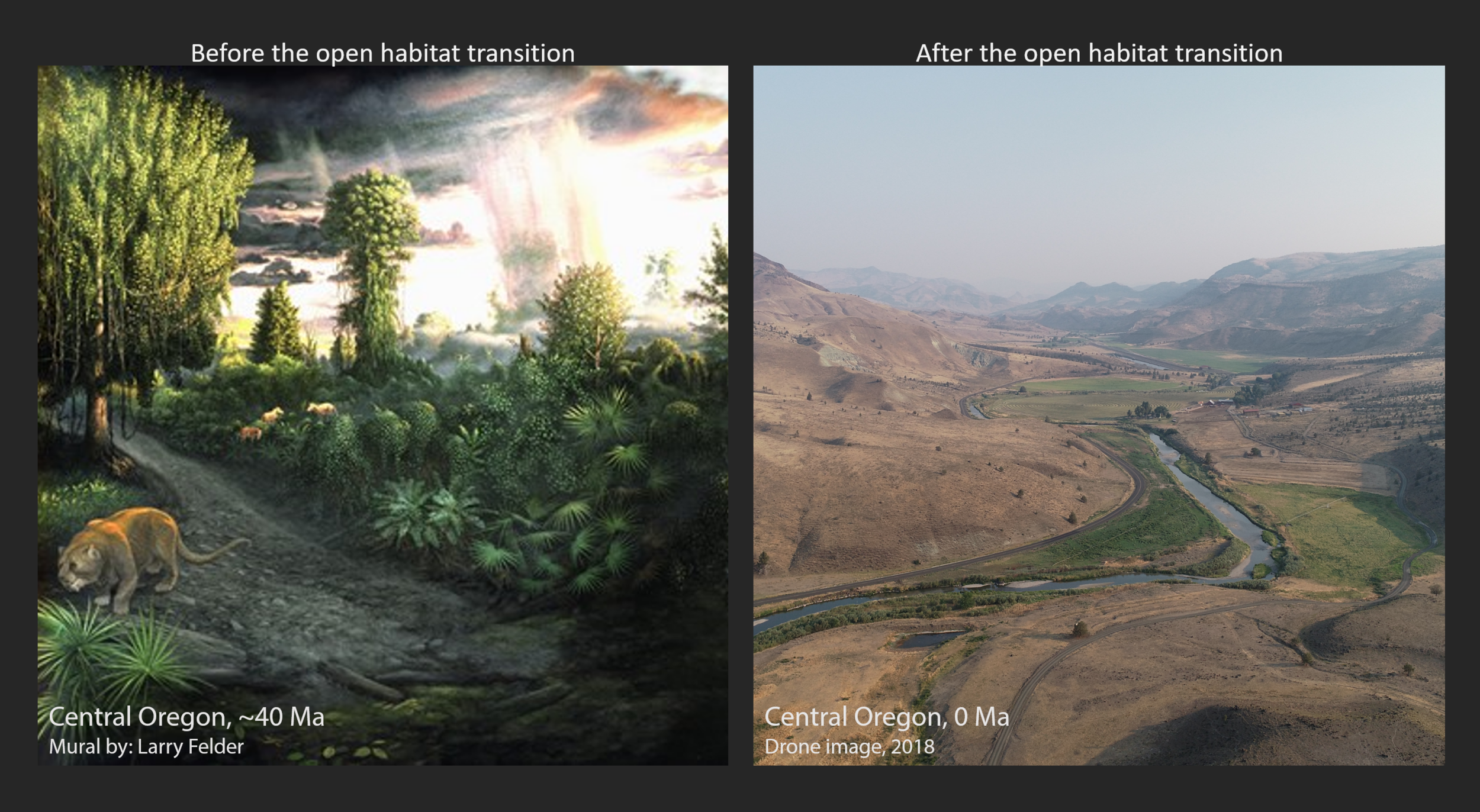
What caused the early Miocene dieback of western U.S. tree cover?
Drier winters drove Cenozoic open habitat expansion in North America
T Kukla, JKC Rugenstein, DE Ibarra, MJ Winnick, CAE Strömberg, CP Chamberlain (2022). AGU Advances.
The problem
The open, grassy habitats that define the western U.S. first emerged in the early Miocene, but with no clear driving force. In fact, the driver behind grassland expansion is contentious in most major episodes around the world, and this ambiguity limits our understanding of how resilient forests are to climate.
Our hypothesis
Forests across the western U.S. today rely heavily on winter moisture which replenishes groundwater. We hypothesize that drier winters caused forest dieback in the past.
How do we reconstruct precipitation seasonality?
We show that the difference in the oxygen isotope composition of authigenic clays and soil carbonates encodes precipitation seasonality, reproducing the winter-wet to summer-wet seasonality gradient that spans the western U.S. today. Using this approach, we find that the region was more winter-wet when forests dominated the landscape.
What caused winter drying?
It’s too soon to know for sure, but high topography drives sharp precipitation seasonality gradients today, and we show that our results are consistent with the uplift of the Cascades range causing drier winters.
Why does precipitation seasonality matter?
Precipitation seasonality informs atmospheric and ecosystem dynamics that are difficult to address with observations and models. Models often disagree on the sensitivity of vegetation and atmospheric circulation to climate, and the observational record is too short to extrapolate to distinct, future climate states. Paleo-precipitation seasonality encodes the atmospheric circulation response to climate and contextualizes past ecological change.
-

The western U.S. marks a winter-wet to summer-wet precipitation gradient today
We compiled and measured samples along this gradient throughout the last 50 million years to reconstruct precipitation seasonality over space and time.
-
Diverging clay and carbonate trends as grassy habitats expand
Clay oxygen isotopes increase (A), while soil carbonates stay the same or decrease (B). The diverging trend is statistically significant in the western, central, and eastern parts of the map to the left. At the same time, the percentage of phytoliths (biogenic silica) indicating open habitat conditions increased drastically (C).
-
A less winter-wet climate after open habitats expand
Clays are usually more winter biased than soil carbonates. Since winter is the low-d18O month (and very likely has been throughout the Cenozoic), we interpret the increase in the clay-carbonate difference as reflecting a decrease in this relative bias, specifically due to winter drying.
-
A more winter-wet climate due to a lower Cascades?
Our rough reconstruction of the pre-open habitat transition seasonality map shows the Cascades had little effect on precipitation seasonality when forests dominated the landscape (Top). This is not surprising—the Cascades mark the rainshadow that gives rise to many open habitats today. We speculate that Cascades uplift caused winter drying and strengthened these rainshadows, forcing forests to retreat to the wetter highlands.


